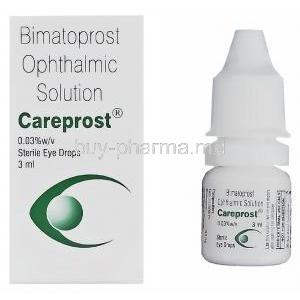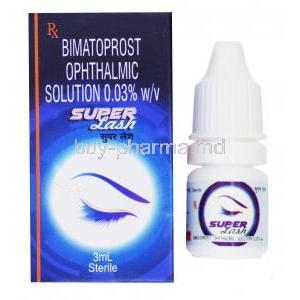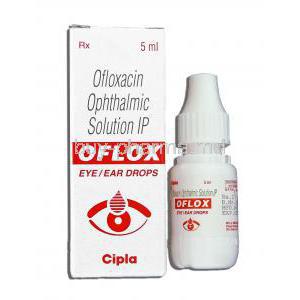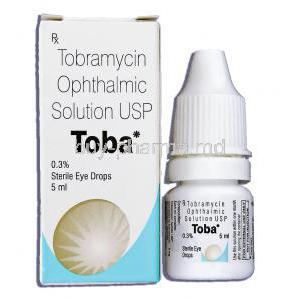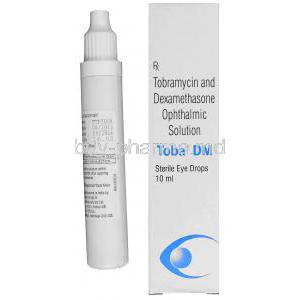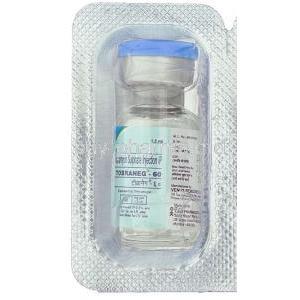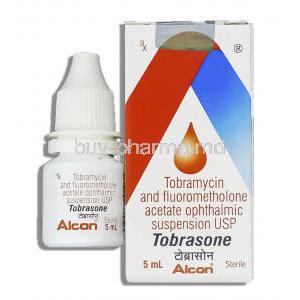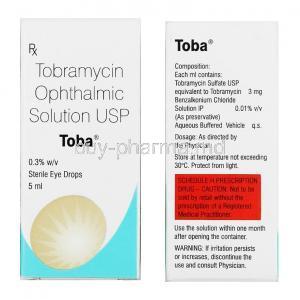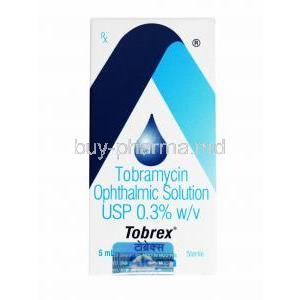Framycetin Eye Drops
- Introduction
- Uses of Framycetin Eye Drops
- Off-Label Uses
- How Framycetin Eye Drops Work
- Composition of Framycetin Eye Drops
- Dosage and Administration
- Administration to Elderly
- Administration to Pregnant Women and Nursing Mothers
- Administration to Children
- Side Effects
- Common Side Effects
- Warnings and Precautions
- Contraindications
- Careful Administration
- Important Precautions
- Interactions With Other Drugs
- Storage of Framycetin Eye Drops
- Handling Precautions
- Overdosage
Introduction
Framycetin eye drops are a medication used in the field of ophthalmology. They are designed to treat various eye infections and offer effectiveness and versatility. These drops go beyond relieving symptoms and provide curative treatment for multiple conditions. In this article, we will explore the uses of Framycetin eye drops, focusing on their role in treating bacterial conjunctivitis, managing blepharitis, and addressing other bacterial eye infections.
Uses of Framycetin Eye Drops
Treating Bacterial Conjunctivitis
Pink eye, also known as conjunctivitis1, is a condition that causes redness, discharge, and ongoing irritation in the eyes. When the cause is determined to be bacterial, Framycetin eye drops are considered a treatment option. There are vital benefits to using Framycetin in this situation:
- Effective Against Bacteria: Framycetin has a broad range of activity against Gram-positive and Gram-negative bacteria.
- Quick Relief: Patients often experience relief within 24 to 48 hours after starting the treatment.
- Reduced Risk of Complications: Proper use of Framycetin can significantly decrease the chances of complications such as ulceration.
Framycetin works by inhibiting protein synthesis, which leads to the death of bacteria cells and ultimately stops the infection from spreading further.
Managing Blepharitis
Blepharitis, a condition where the eyelids become inflamed, often happens alongside infections. This inflammation causes red eyelids along with discomfort and crusting. Using Framycetin eye drops is a treatment option, especially for dealing with the bacterial aspect of this condition.
- Cleaning the Eyelid: Framycetin helps to remove dirt and sanitize the edge of the eyelid, which is crucial in managing blepharitis.
- Preventing Infections: Framycetin can also contain additional microbial growth on your eyelids.
Moreover, including Framycetin in your treatment plan may speed up recovery. Improve the overall quality of life for those affected by this condition.
Addressing Other Bacterial Eye Infections
Off-Label Uses
Use in Ear Infections
Although primarily designed for purposes, Framycetin eye drops can also effectively treat ear infections. Otitis externa, which is ear canal inflammation, often responds well to treatment with Framycetin. One of the benefits of Framycetin is its potent antimicrobial properties, which target a wide range of bacterial species commonly associated with ear infections. In addition to fighting bacteria, Framycetin helps reduce inflammation, providing relief and enhancing patient comfort. In situations where conventional ear solutions are unavailable or not recommended, doctors may choose to use off-label Framycetin for treating otic infections.
Use for Skin Wounds and Burns
Another exciting way to use Framycetin eye drops is for skin care purposes. When it comes to skin wounds and superficial burns at a high risk of bacterial contamination, these drops can be beneficial due to the antibiotic properties of Framycetin. They can also serve as a preventive measure against wound infections. Moreover, Framycetin helps facilitate tissue regeneration by preventing colonization, allowing uninterrupted healing. However, it's important to note that this off-label use should be closely monitored without comprehensive clinical studies focused on dermatological applications.
Use in Veterinary Medicine
With its spectrum antibiotic properties, Framycetin is commonly used in veterinary medicine to treat eye and ear conditions in small animals. One advantage of using Framycetin is that the dosage can be adjusted to suit the needs of human patients. This flexibility makes it cost-effective, eliminating the need for specialized treatments. However, it's essential to approach applications of Framycetin cautiously and seek professional guidance due to its off-label usage.
How Framycetin Eye Drops Work
Mode of Action Against Bacteria
Framycetin3 works at a level by explicitly targeting bacterial ribosomes. Its primary function is to prevent the production of proteins within cells. Attaching to the 30S subunit, Framycetin hinders the elongation of peptide chains, resulting in faulty proteins. Consequently, the integrity of cells becomes compromised, eventually leading to their death. These actions make Framycetin effective against both Gram Gram-positive bacteria.
Timeframe for Efficacy
Usually, patients experience an improvement in their symptoms within 24 to 48 hours after starting the Framycetin treatment. However, the effectiveness of the treatment may vary depending on the severity and cause of the infection. It is crucial to complete the prescribed course for extended-lasting benefits.
Composition of Framycetin Eye Drops
Active Ingredient
The effectiveness of Framycetin eye drops can be attributed to its component, Framycetin sulfate. This antibiotic belonging to the aminoglycoside family is responsible for the range of uses of this medication.
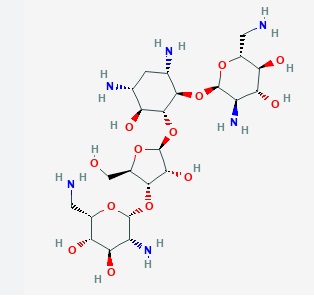
Inactive Ingredients
Apart from the active ingredient, these eye drops contain various inactive components, such as isotonic buffers and stabilizers. These additional ingredients improve solubility, stability, and overall user satisfaction.
Preservatives Used
To ensure that Framycetin eye drops remain effective over time and prevent the growth of bacteria, preservatives, like benzalkonium chloride, are included. These additions emphasize the quality of the product.
Dosage and Administration
Recommended Dosage
Determining the amount of Framycetin eye drops1 involves considering both pharmacokinetic principles and individual patient factors. A standard treatment plan typically involves putting one to two drops in the eye and repeating this every 4 to 6 hours. At the beginning of treatment for conditions, the initial dosage may be increased depending on the severity. It is recommended to gradually reduce the dosage once symptoms are under control to minimize any effects. It is crucial to follow a healthcare provider's instructions without question to achieve the possible therapeutic results.
How to Administer the Eye Drops
To ensure effectiveness, it is essential to administer the eye drops with care. Start by washing your hands and giving the eye drop bottle a gentle shake. Then, gently pull back your eyelid. Carefully put the prescribed drops into the space between your eyeball and eyelid. To prevent contamination, make sure that the dropper tip doesn't come into contact with any surfaces; after applying the drops, it is recommended that patients close their eyes for 1 2 minutes softly. This helps to optimize the absorption of the medication.
Dosage Adjustments
Personalizing the dosage plan when dealing with insufficiency or taking other medications simultaneously is crucial. It is necessary to consult a healthcare provider to make dosage adjustments to prevent any inconsistencies or unintended harmful effects.
Administration to Elderly
Dosage Guidelines
In adults, how medications are processed in the body often differs from younger individuals. A more cautious treatment plan is generally recommended to account for changes in how drugs are absorbed and metabolized. This may involve reducing the frequency of medication application based on how much the body absorbs. Additionally, dosage adjustments might be needed if there are health conditions related to aging.

Precautions and Considerations
It is crucial to exercise caution when giving Framycetin to individuals. Monitoring their hydration levels and kidney function is essential, and regular eye checkups are vital.
Administration to Pregnant Women and Nursing Mothers
Safety Profile
Considering the scarcity of data regarding the effects of Framycetin during pregnancy, it is advisable to exercise caution when using this medication in pregnant women. However, it is worth noting that the drug's minimal absorption into the bloodstream after applying it to the eyes helps alleviate some concerns.

Doctor's Recommendations
Doctors frequently consider the advantages and potential risks before recommending Framycetin for pregnant or nursing women. It is crucial to obtain consent and thoroughly understand the associated risks beforehand.
Administration to Children
Age Restrictions
The use of Framycetin eye drops in children has not been extensively studied. Therefore, it is generally advised to consult a pediatrician before using it on infants and toddlers.

Pediatric Dosage
Dosage customization is necessary for children who exceed age limits to account for their metabolic rates and body mass variations. Typically, healthcare providers may consider reducing the frequency of administration based on their assessment.
Side Effects
Common Side Effects
Like any medication, Framycetin eye drops have possible side effects1. Although they are generally well tolerated, some patients may experience mild symptoms. It's important to note that these side effects are common and often resolve independently or improve with continued use. Keeping up with eye checkups can help identify and manage these symptoms early.

Rare But Serious Side Effects
Although it is uncommon, there have been instances where Framycetin eye drops have been associated with the development of serious ocular or systemic problems. These can vary from reactions to even potential kidney damage in situations where the bubbles are accidentally ingested or excessively absorbed into the eyes. It is essential to stop using the medication and seek urgent medical advice if any severe side effects occur. In some cases, additional tests may be conducted to determine the severity of the adverse reaction.
Common Side Effects
Eye Redness
Eye redness is a mentioned side effect that is usually harmless and temporary. However, if the redness continues or worsens, it's an idea to seek advice from a healthcare professional.
Irritation or Burning
It is not unusual to feel a bit irritated or experience a burning sensation after applying something. Usually, these symptoms go away on their own. If they persist, it could indicate an underlying problem, like an allergic reaction.

Temporary Blurred Vision
Patients might notice a blurring of their vision after using Framycetin eye drops. Although it can be worrisome, this typically improves within minutes.

Warnings and Precautions
Precautions Before Use
Before starting treatment with Framycetin eye drops, it is essential to take several precautions to prevent any reactions. It is necessary to provide your healthcare provider with a medical history, including information about any other medications or allergies you may have. If you are prone to reactions, your healthcare provider may also recommend initial patch testing.
Conditions Under Which to Avoid Use
There are medical conditions that make it entirely unsuitable for use Framycetin eye drops. If someone has a known allergy to Framycetin or its components, they should not use it. Additionally, someone with renal impairment should avoid using this medication due to its potential harm to the kidneys.
Contraindications
Allergies
Before starting treatment with Framycetin eye drops, reviewing the patient's allergies is essential. If there is an allergic reaction to Framycetin or any of its components, it is strictly advised not to use this medication in cases where the patient's allergic history is unclear; diagnostic allergy testing may be conducted as a precautionary measure. It is also essential to remain vigilant, even if there hasn't been a documented allergy in the past, as sensitization could develop over time.

Pre-existing Conditions
Certain medical conditions can make it ineffective and potentially dangerous to use Framycetin. People with kidney problems or eye diseases, like glaucoma, should avoid using this medication unless specifically recommended by a healthcare professional.
Careful Administration
How to Monitor for Side Effects
Pharmacovigilance plays a role in optimizing the balance between the risks and benefits of using Framycetin eye drops. It is essential to undergo ophthalmological evaluations and be attentive to symptoms like persistent redness or irritation, as they can help identify side effects early on. Monitoring metrics such as intraocular pressure, especially in high-risk populations, is also recommended. Additionally, keeping diaries or logs can provide valuable insights alongside professional assessments.
Steps to Minimize Risk
Following a set of risk reduction strategies can significantly reduce the chances of events. Using application methods, sticking to recommended dosing schedules, and promptly stopping if severe side effects occur, you can take critical initial steps to minimize risks.
Important Precautions
Use With Contact Lenses
If you regularly wear contact lenses, it is essential to take care. The eye drops with framycetin may have preservatives that can stick to your lenses and cause them to change color or deteriorate. Before using the eye drops, remove your contact lenses and wait for at least 15 minutes before putting them back in. If you use contact lenses frequently, you might want to consider preservative alternatives.
Concomitant Use With Other Eye Medications
Knowing that their therapeutic effects can be enhanced or weakened when using Framycetin and eye medications is essential. To avoid any conflicts between medications, waiting for at least 5 to 10 minutes before applying different eye medications is often recommended. Additionally, eye drops before ointments are generally advised as they tend to be absorbed effectively.
Interactions With Other Drugs
Potential for Drug Interactions
Even though applied topically, Framycetin eye drops can still interact with drugs. The risk of interactions may occur if the medicine is absorbed into the bloodstream, especially when there is a problem with the barrier. It's essential to be aware of synergistic or antagonistic effects when taking Framycetin and other medications. Before starting Framycetin treatment, you must discuss any medicines you are currently taking with healthcare providers.
Medications to Avoid
Certain medicines, those that have the potential to harm the kidneys or ears, should be carefully avoided to prevent harmful interactions. This list includes antibiotics and diuretics, among others.
Storage of Framycetin Eye Drops
Ideal Storage Conditions
The effectiveness of Framycetin eye drops depends on how they are stored. It is best to keep them in a dark place, usually between 2 and 8°C, away from sunlight and moisture. Consistency in temperature is essential, as fluctuations can reduce the effectiveness of the medication. To prevent contamination, close the bottle cap after each use.

Shelf-Life
Framycetin eye drops usually last around 24 months if they remain unopened. However, once you break the seal, it's best to use them within a month to maintain their therapeutic effectiveness.
Handling Precautions
Sterility Precautions
Maintaining the sterility of Framycetin eye drops is crucial to handle them with care. It is essential to avoid touching the dropper tip against any surface, including your eyes or hands. If you are at risk of contamination, wearing sterile gloves when administering the eye drops is recommended. By employing techniques, you can significantly reduce the chances of contamination.
Disposal of Expired Product
It would be best to dispose of expired or compromised Framycetin eye drops following the guidelines for waste. Using eye drops that have passed reduces their effectiveness and increases the chances of experiencing adverse side effects.
Overdosage
Symptoms of Overdose
While it is uncommon, there is a possibility of overdose in cases where the medication is accidentally swallowed or when there is excessive use in the eyes. Signs of an overdose may include feelings of nausea, dizziness, or, in some cases, potential harm to the kidneys. If any of these symptoms occur, it is crucial to seek medical assistance.

Immediate Actions and Antidotes
In the case of an overdose, it is crucial to seek immediate medical attention. The usual treatment approach may involve addressing symptoms, monitoring kidney function, and administering antidotes if they're accessible.


